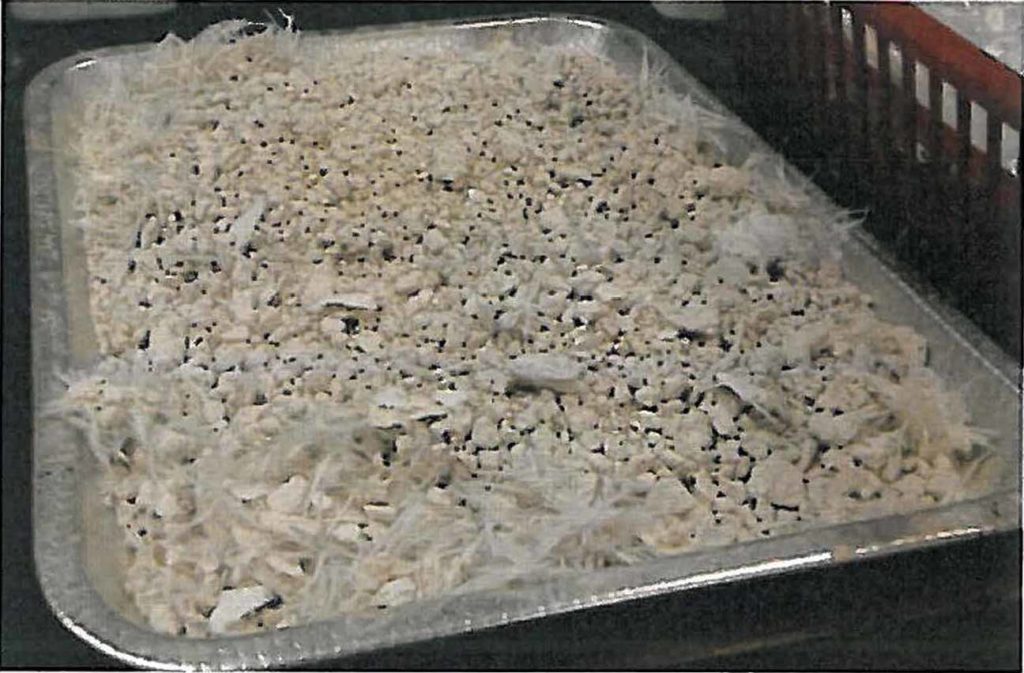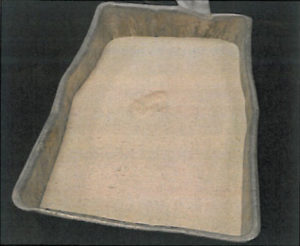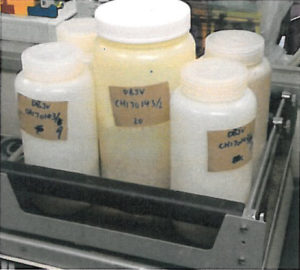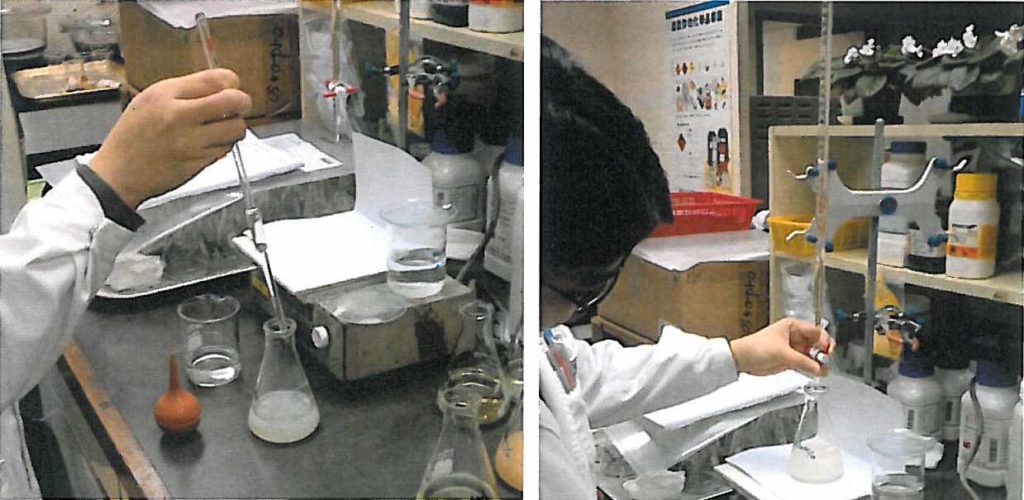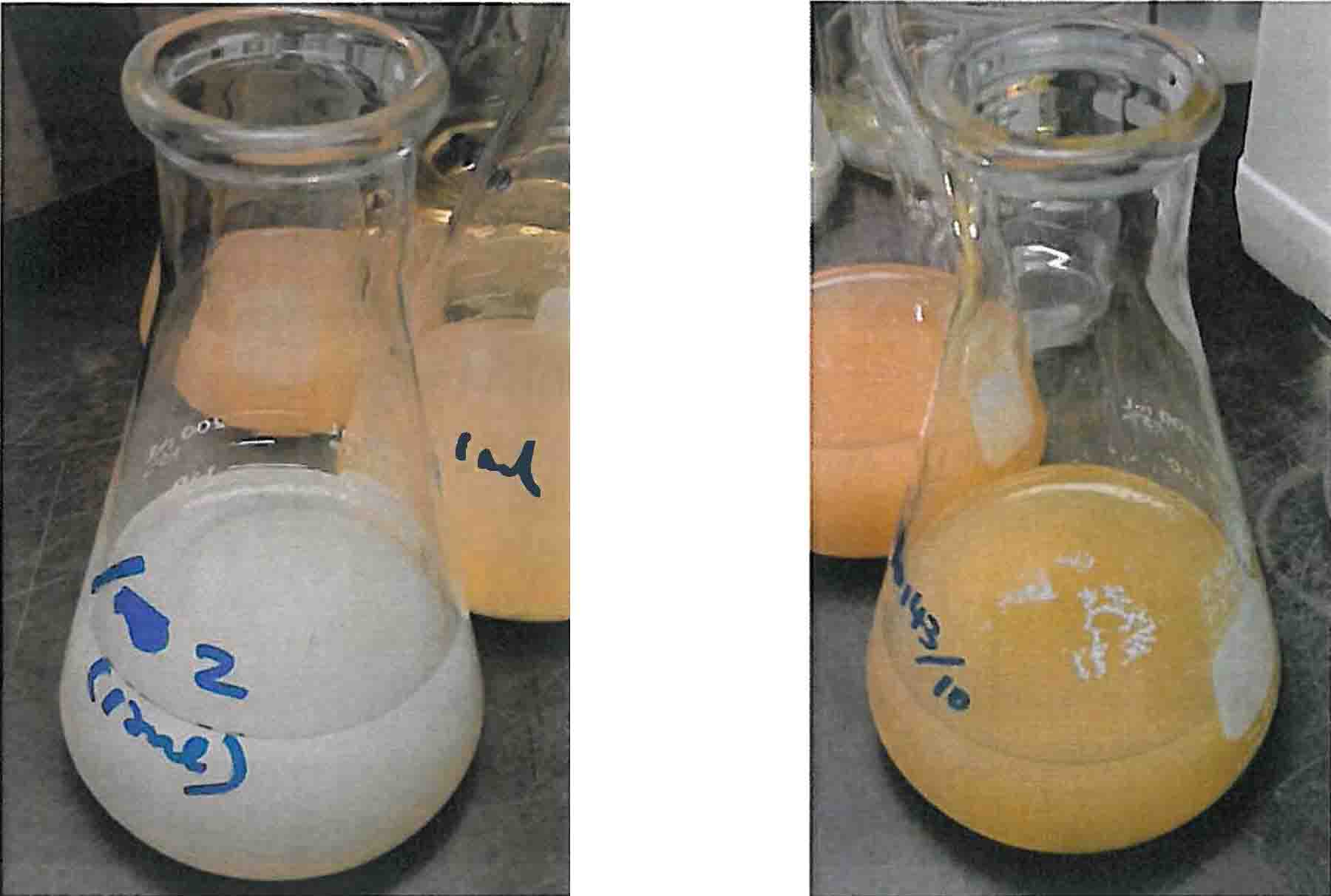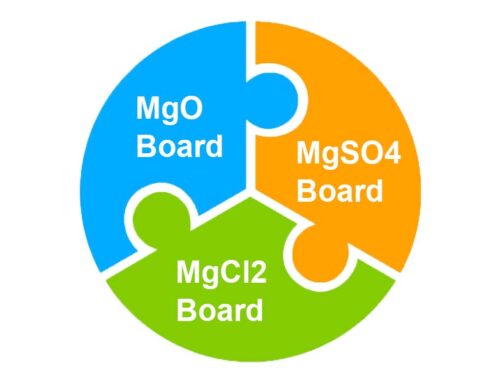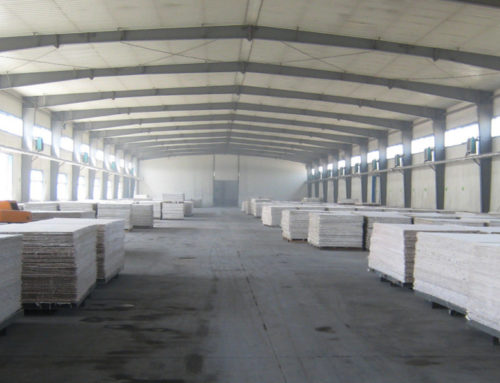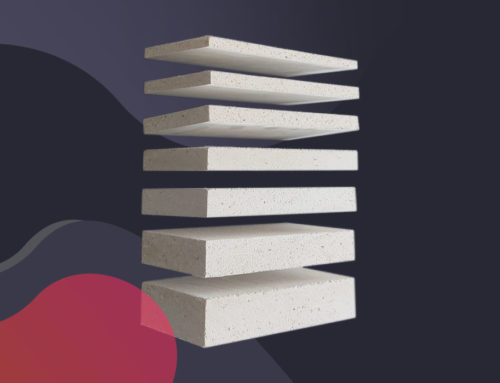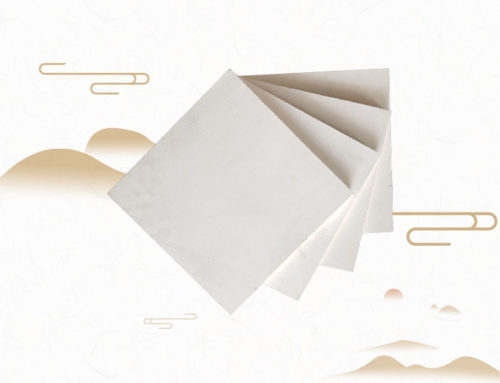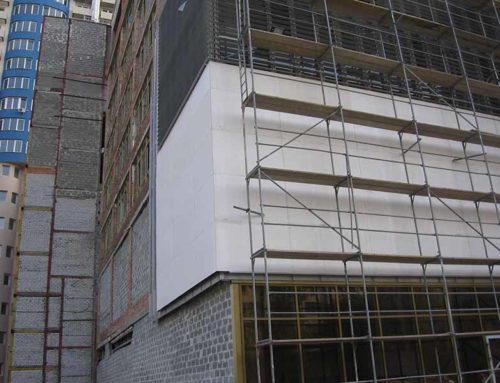Method used: Ref: BS 812: Part 117:1988
I. Sample Preparation for 20mm
1. Pneumatic hammer was used to break MgO boards to irregular shape. The size should be less than 100mm. All the fragments of MgO boards should be stored in clean plastic bag. Please be sure that the fiber should store together with the MgO boards fragments too.
2. Any over sizes of fragments were then put into crushing machine and sieved the samples through 20mm BS sieve.
3. Crushed fragments were evenly placed on a metallic plate.
4. The samples was put into drying oven at 105士5°C overnight.
Crushed fragments from MgO boards on a metallic plate
II. Sample Preparation for 150 microns
1. Pneumatic hammer was used to break MgO boards to irregular shape. The size should be less than 100mm. All the fragments of MgO boards should be stored in clean plastic bag. Please be sure that the fiber should store together with the MgO boards fragments too.
2. Any oversizes of fragments were then put into Crushing Machine and sieved the samples through 20mm BS sieve.
3. The crushed fragments sub-sample from MgO boards were put into Grinding Machine.
4. Grounded powders were sieved through 150-micron sieve to provide a test portion.
5. Put the test portion into a flat metallic container.
6. The samples was put into drying oven at 105士5°C overnight.
Grounded powders from MgO boards in a metallic container
III. Preparation of Extracts for 20mm Samples
1. The metallic plate was taken out from oven and allowing to cool at room temperature.
2. Weigh around 400g of samples into a plastic bottle by using a top-loading balance.
3. Add distilled water equal to twice of the mass of the test portion.
4. Fasten the water-tight bottles and mix the contents by occasional shaking for 24 hours.
IV. Preparation of Extracts for 150-micron Samples
1. The metallic container was taken out from oven and allowing to cool at room temperature.
2. Weigh around 200g of samples into a plastic bottle by using a top-loading balance.
3. Add distilled water equal to the mass of test portion.
4. Fasten the water-tight bottles and mix the contents by occasional shaking for 24 hours.
Treated samples on shaking table
V. Determination of the Chloride Content of the Extracts
1. Pipette 1.0 ml of sample solution into a conical flask and diluted with 100ml distilled water.
2. Add 5 ml of nitric acid to the flasks.
3. Add 5 ml ammonium ferric (Ill) sulfate as an indicator.
4. 10ml of silver nitrate were added into the sample mixture by pipette. Solution should turn white if chloride ion present.
5. Place a magnetic stirrer bar into the flask.
6. Put the conical flask on a magnetic stirrer machine.
7. Titrate with Ammonium thiocyanate solution by using burette until the first permanent color change occurs, that is from white opalescence to pale brown.
8. Record the volume used of thiocyanate solution
9. Repeat the procedure with the extract from the second test portion.
Pipette and burette were used for titration
White color after silver nitrate is added Pale brown-color after the titration
VI. Calculation
1. For water: sample used in 2:1 ratio
C = 0.007092 x (V2 -10 (T) V3) – Blank
2. For water: sample used in 1:1 ratio
C = 0.003546 x (V2 – 10 (T) V3) – Blank
Where C is the chloride ion present in the extracts from test portion (%)
V2 is the volume of 0.1 mol/L silver nitrate solution added (in ml)
V3 is the volume of standardized thiocyanate solution added (in ml)
T is the concentration of the standard thiocyanate solution (in mol/L)
VII. Test Results
According to the above method, the SGS lab tested our sample boards of different batches in a year. The tested value of water-soluble chloride content is as follows:
| Batch No. | Water Soluble Chloride (150 um) |
| 7096/103526 | 2.89 % |
| 7096/103589 | 1.86 % |
| 7096/103640 | 3.16 % |
| 7096/103641 | 2.61 % |
| 7096/103642 | 2.48 % |
| 7096/103709 | 2.30 % |
| 7096/103710 | 2.05 % |
| 7096/103711 | 2.32 % |
| 7096/103777 | 2.26 % |
| 7096/104034&104092 | 2.81 % |
| 7096/104035-36 | 2.80 % |
| 7096/104064 | 2.33 % |
| 7096/104131 | 2.70 % |
| 7096/104214 | 2.28 % |
| 7096/104215 | 2.47 % |
| 7096/104216 | 1.81 % |
| 7096/104390 | 2.42 % |
| 7096/104438 | 2.13 % |
| 7096/104440(04.01.17) | 1.65 % |
| 7096/104440(30.53.16) | 1.04 % |
| 7096/104442 | 2.25 % |
| 7096/104472 | 2.15 % |
| 7096/104474 | 2.29 % |


